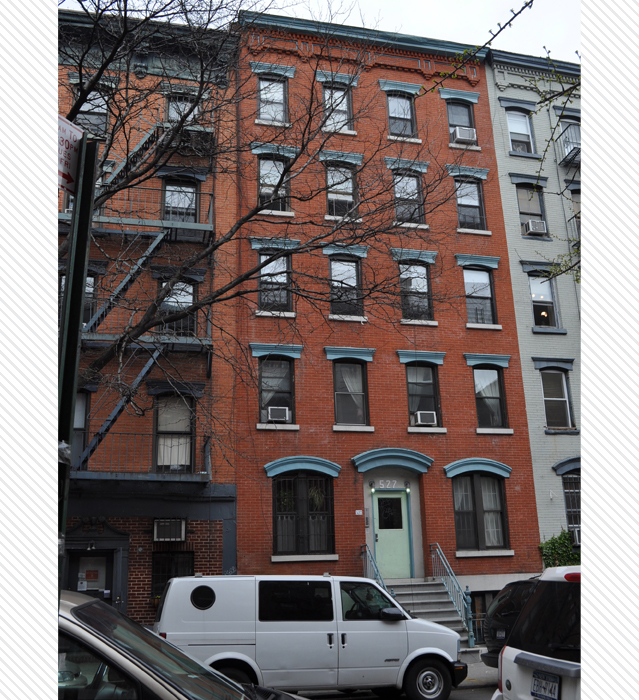A Walk Through Astor Land with East Village Building Blocks
One of New York most prolific and high-profile building families, the Astors left their indelible mark on countless areas of the city. Though their name is typically connected to grand pieces of our city’s history, like the Astor Library and, of course, Astor Place, an enormous collection of their output hides almost in plain sight: the large assemblage of tenements built on their land in the East Village. A clear testament to John Jacob Astor’s purchasing power, and to his son William’s legacy as the “Landlord of New York,” these blocks serve are a testament to the Astors’ impact and form what is likely the largest collection of pre-law and pre-Civil War tenements in New York. A new tour on East Village Building Blocks guides us through this significant portion of their domain.

The Astor Fortune
Arriving in New York around 1784, John Jacob Astor began building his New York real estate empire in 1799, buying up more and more Manhattan land as he foresaw its rapid growth into a world capital. A great concentration of his holdings sits in today’s Alphabet City, then known as the Dry-Dock neighborhood, on the blocks below Tompkins Square Park. His son, William Backhouse Astor Sr., inherited these holdings, which he then leased to others who constructed and looked after the buildings on his properties. Excerpts from a book titled Archie and Amelie: Love and Madness in the Gilded Age give a rather scathing view of the man, presenting him as the stone-faced owner of these blocks who “spent his life hunched over his contracts and leases”, with little interest in serving his tenants or the broader city.

Pre-Law Living
As we see throughout this Building Blocks tour, a majority of these buildings were constructed in the late 1850s and early 1860s, when the Italianate style prevailed. Their handsome, imposing cornices and segmental arched window lintels reflect these mid-19th century tastes. This area below Tompkins Square Park, developed in 1834, was initially imagined as another elegant residential district to foster more growth for the city. But the population boomed throughout the first half of the 19th century, and housing situations became dire. Constructed before light and air started to become standard living requirements with the Tenement House Act of 1879, these tenements provided spare and simple living conditions for their residents.

Interestingly, though, a look at historic maps and modern-day aerial views of the property shows that the buildings only occupy half of their lots, leaving unusually wide backyards, giving them considerably more light and air than most tenements, which sometimes have windows facing air shafts or walls. Perhaps owing to the original vision of leasing these apartments to more affluent families, some saw them as a vast improvement over some other neighborhood tenements. According to L.E.S.P.I., “the New York Daily Tribune advertised the opening of ‘new and desirable tenements’ along the square’s southern border.” Another unique feature of some of these tenements is their wooden cornices and other details, many of which have fortunately remained intact.


A Big Building Blocks Tour
You might notice that, while most other Building Blocks tours feature a handful of sites, the Astor Tenements tour includes nearly 90 buildings. And this doesn’t even include every property that once belonged to the Astor family – just the tenements! The Randel Composite Map from the Museum of the City of New York allows us to zoom into this considerable piece of Astor land as well as the family’s other holdings throughout the city. The size of their Tompkins Square holdings and other properties show just how powerful an impact they made on the city’s development.

Check out the full tour on East Village Building Blocks and see all the nearly one hundred tenements included, covering most of more than a half dozen city blocks.
This and all the other Building Blocks tours reveal exciting new information about each building in the East Village, including links to related primary documents and further reading. Click here to see the other Guided Tours available on East Village Building Blocks and here to read other recent Off the Grid posts about the tours!
